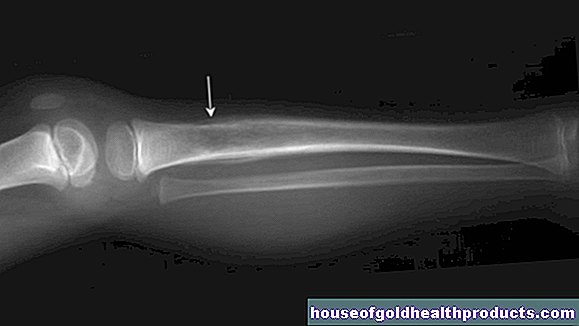Ondansetron
All content is checked by medical journalists.Ondansetron is an agent that suppresses nausea and thus prevents vomiting (antiemetic). The active ingredient blocks serotonin receptors and thus helps against attacks of nausea during chemotherapy or radiation therapy in cancer patients. Read everything you need to know about the use, effects and possible side effects of ondansetron here!
This is how ondansetron works
Vomiting is triggered in the brain (in the so-called vomiting center) by the nerve messenger (neurotransmitter) serotonin binding to certain docking points, the 5HT3 receptors.
Ondansetron can also dock on these receptors without triggering nausea. As the active ingredient occupies the receptors, serotonin can no longer dock - vomiting is suppressed.
However, since the antiemetic only competitively inhibits the docking site, i.e. there is competition for the binding sites on the receptor, large amounts of the active ingredient must always be present in the body in order to suppress the effect of serotonin.
Uptake, breakdown and excretion of ondansetron
The antiemetic is either taken by mouth (oral use) and then absorbed into the blood through the intestinal wall or given directly as an infusion into a vein (intravenous use). The active ingredient reaches the brain via the bloodstream. It is almost completely broken down in the liver and 80 percent of it is excreted in the urine and 20 percent in the bile with the stool. After about 3.5 hours, half of the active ingredient has left the body (half-life).
When is ondansetron used?
Ondansetron is used to treat and prevent nausea and vomiting during chemotherapy or radiation therapy.
This is how ondansetron is used
Typically, patients receive four to eight milligrams of the anti-emetic drug orally or intravenously. The effects last for a few hours, then a new dose can be given. The maximum daily dose is 32 milligrams.
Children from the age of four can be treated with ondansetron. The dose is adjusted to the body surface (five milligrams per square meter).
What are the side effects of ondansetron?
The main ondansetron side effects are headache, drowsiness, constipation, abdominal pain, and difficulty sleeping. Some cases of intolerance reactions with hives (urticaria) and skin / mucous membrane swellings (angioedema) have also been described.
What should be considered when using ondansetron?
The antiemetic must not be used in the event of a severe disturbance of bowel motility (bowel motility).
During pregnancy and breastfeeding, the active ingredient should only be used if absolutely necessary.
Interactions
Certain enzymes in the liver break down ondansetron. If other drugs that increase the amount of these enzymes are also taken, the breakdown of the antiemetic increases, which can impair its effectiveness. Examples of such drugs are carbamazepine (antispasmodic for epilepsy) and rifampicin (antibiotic for tuberculosis).
How to get medication with ondansetron
Ondansetron requires a prescription, so it is only available at the pharmacy after presenting a doctor's prescription.
Tags: toadstool poison plants prevention medicinal herbal home remedies






























